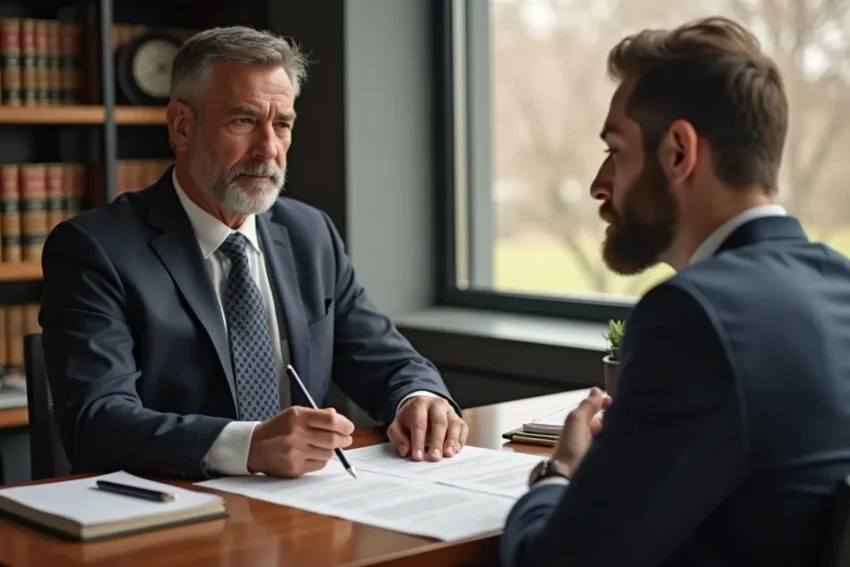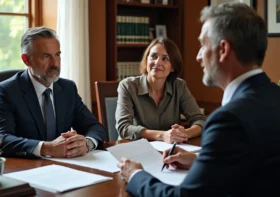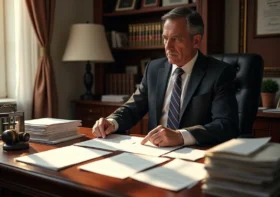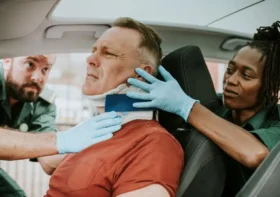Common Premises Liability Claims and How Attorneys Help

Premises liability claims are a vital aspect of personal injury law, holding property owners accountable for ensuring safe environments. These claims often arise from slip and fall accidents, inadequate maintenance, or hazardous retail conditions.
Attorneys play an essential role in advocating for victims by investigating incidents and securing rightful compensation. Their expertise promotes safety measures and prevents future incidents. Understanding how attorneys navigate these claims is key to fostering safer premises for all.
Contents
- 1 Understanding Premises Liability Laws
- 2 Slip and Fall Accidents in Public Spaces
- 3 Inadequate Maintenance and Its Consequences
- 4 Dangerous Conditions in Retail Stores
- 5 Liability for Injuries on Rental Properties
- 6 Swimming Pool Accidents and Safety Violations
- 7 Building Code Violations and Structural Hazards
- 8 Negligent Security and Crime-Related Injuries
- 9 The Role of Insurance in Premises Liability Claims
- 10 How Attorneys Build a Strong Premises Liability Case
- 11 Frequently Asked Questions
- 11.1 How Do Weather Conditions Affect Premises Liability Claims?
- 11.2 What Is the Statute of Limitations for Premises Liability Cases?
- 11.3 Can Multiple Parties Be Liable in a Single Premises Liability Claim?
- 11.4 How Is Liability Determined in a Shared Property Like a Condominium?
- 11.5 What Are Common Defenses Used Against Premises Liability Claims?
Understanding Premises Liability Laws
How well do you grasp the intricacies of premises liability laws? These laws are essential in determining the responsibilities of property owners. At the heart of premises liability is the “duty of care” owed by those in control of a property to anyone who enters it. This duty mandates that owners take “reasonable precautions” to guarantee the safety of their visitors.
Whether it’s a residential home or a commercial establishment, failure to maintain a safe environment can lead to legal repercussions. Knowledgeable attorneys emphasize that understanding this duty involves not just preventing hazards, but also promptly addressing any potential dangers. By adhering to these principles, property owners can greatly reduce the risk of liability claims, ensuring safer environments for all.
Slip and Fall Accidents in Public Spaces
Slip and fall accidents in public spaces are a prevalent issue that underscores the importance of maintaining safe environments for all. These incidents often result from inadequate attention to floor maintenance protocols and the absence of wet floor signage. Public spaces, bustling with activity, are particularly vulnerable to such hazards.
Empathetic understanding of these accidents reveals the profound impact they can have on individuals, ranging from minor injuries to severe disabilities. To mitigate these risks, public space operators must adhere to rigorous maintenance routines and promptly display wet floor signage to alert visitors of potential dangers.
By prioritizing safety and implementing these precautionary measures, they can noticeably reduce the frequency of slip and fall accidents, thereby ensuring a safer environment for everyone.
Inadequate Maintenance and Its Consequences
Inadequate maintenance of properties often leads to neglected repairs, which can pose significant slip and fall dangers to unsuspecting visitors. Property owners bear the vital legal responsibility of ensuring their premises are safe and well-maintained to prevent such accidents. When owners fail in this duty, the consequences can be severe, not only resulting in personal injury but also exposing them to substantial legal liabilities.
Impact of Neglected Repairs
A significant number of premises liability claims arise from neglected repairs and inadequate maintenance, underscoring the serious consequences of failing to uphold property safety standards. Unaddressed maintenance issues often result in deteriorating property conditions, creating hazards that compromise the safety of occupants and visitors.
Such neglect reflects a lack of responsibility and can lead to preventable accidents and injuries. Property owners and managers are expected to proactively address maintenance concerns to prevent liability and guarantee a safe environment.
Legal professionals emphasize the importance of regular inspections and timely repairs, advocating for accountability and the well-being of the public. By addressing these issues promptly, property owners not only fulfill their legal obligations but also foster trust and safety within their communities.
Slip and Fall Dangers
Neglected repairs frequently manifest in the form of slip and fall hazards, posing a prominent threat to personal safety on various properties. These dangers are often exacerbated by wet floors and unattended spills, which transform ordinary environments into perilous terrains.
When maintenance is inadequate, such hazards become prevalent, endangering unsuspecting individuals. In commercial and residential settings alike, the lack of timely intervention to address slippery conditions can lead to severe injuries, impacting victims physically and financially.
Empathetic observers recognize the distress caused by these preventable incidents. Knowledgeable professionals advocate for proactive measures to eliminate these risks, emphasizing the importance of regular inspections and immediate action to remedy hazardous conditions. By addressing wet floors and spills promptly, property managers can drastically reduce the incidence of slip and fall accidents.
Legal Responsibilities of Owners
Property owners hold a significant responsibility to maintain safe environments for visitors, a duty that, when neglected, can lead to serious legal consequences. Inadequate maintenance, such as failing to repair broken stairs or neglecting icy walkways, breaches property owner obligations. These responsibilities are not merely suggestions but part of duty of care standards that require diligence and proactive measures to prevent hazards.
When owners disregard these duties, they expose themselves to premises liability claims, potentially facing substantial financial and reputational damage. Legal consequences serve to underscore the critical importance of maintaining safe premises. Experienced Premises Liability Lawyers in Austin play a pivotal role in ensuring that these standards are upheld, advocating for victims’ rights and compelling owners to fulfill their obligations, thereby preventing future harm.
Dangerous Conditions in Retail Stores
Retail stores are often bustling hubs of activity, yet they can harbor hidden dangers such as uneven flooring, poor lighting, and unexpected spills that lead to slip incidents. These hazards pose significant risks to unsuspecting customers, potentially resulting in serious injuries that disrupt lives. Attorneys play an essential role in holding businesses accountable, ensuring that safety measures are implemented to protect patrons and prevent future accidents.
Uneven Flooring Hazards
How often do shoppers in bustling retail environments consider the potential dangers lurking underfoot? Uneven flooring, a common issue in many stores, presents significant tripping hazards. These unexpected obstructions, such as loose tiles or worn carpets, can lead to serious injuries. Retailers have a responsibility to maintain safe premises by promptly addressing such hazards.
Ignoring these issues not only jeopardizes customer safety but also exposes businesses to liability claims. Attorneys play a pivotal role in helping injured parties seek compensation for medical expenses and suffering.
By holding businesses accountable, they encourage the implementation of preventive measures. This not only protects shoppers but also promotes a safer shopping experience, ultimately benefiting both customers and retailers by reducing the risk of costly legal consequences.
Poor Lighting Risks
Just as uneven flooring can pose significant risks to shoppers, inadequate lighting in retail environments presents its own set of dangers. Poor visibility risks are prevalent when lighting conditions fail to illuminate walkways, corners, or merchandise displays adequately. Shoppers may not see obstacles or hazards, increasing the likelihood of trips and falls.
These incidents can lead to serious injuries, prompting legal claims against store owners for failing to maintain safe premises. Attorneys play a pivotal role in such cases, helping injured parties demonstrate that inadequate lighting conditions contributed to their accidents.
By gathering evidence, such as witness testimonies and expert opinions, legal professionals advocate for fair compensation. Ultimately, addressing poor lighting risks is not just a legal obligation but a moral imperative for retailers.
Spill and Slip Incidents
Although often overlooked, spill and slip incidents represent a significant hazard in retail environments, posing a threat to both customers and employees. Wet floors are a common occurrence in stores, often due to spills, cleaning activities, or inclement weather conditions. When these hazards are poorly marked, the risk of accidents increases dramatically.
Retailers have a responsibility to vital their premises are safe by promptly addressing spills and using clear signage to warn of potential dangers. Failure to do so can result in serious injuries, leading to costly legal claims. Attorneys play an imperative role in advocating for victims, guaranteeing that businesses are held accountable for negligence. By highlighting the importance of proper maintenance and hazard communication, legal professionals contribute to safer retail environments.
Liability for Injuries on Rental Properties
In the domain of rental properties, landlords carry significant responsibility for ensuring the safety and well-being of their tenants. Proper tenant screening processes and regular rental property inspections are indispensable measures landlords can implement to mitigate potential liability for injuries. By thoroughly vetting prospective tenants, landlords can identify individuals who maintain safe living environments, consequently reducing the risk of accidents.
Additionally, conducting routine inspections allows landlords to identify and address hazards promptly, such as broken staircases or faulty wiring, which could lead to tenant injuries. Failure to take these proactive steps not only jeopardizes tenant safety but also exposes landlords to legal claims. As a result, diligent attention to tenant screening and property inspections is essential in safeguarding both tenant welfare and landlord interests.
Swimming Pool Accidents and Safety Violations
Swimming pool accidents, while often preventable, pose substantial risks that demand rigorous adherence to safety regulations. Lifeguard negligence is a critical factor that can lead to tragic outcomes, as these professionals play a pivotal role in safeguarding swimmer well-being. Failure to maintain vigilance or respond promptly to emergencies can result in severe injuries or fatalities.
Equally concerning are hazardous pool conditions, which include slippery surfaces, improper signage, or faulty equipment. These dangers considerably increase the likelihood of accidents, emphasizing the need for meticulous maintenance and compliance with safety standards.
Attorneys specializing in premises liability claims are instrumental in holding property owners accountable for negligence. By advocating for victims, they help ensure justice and promote adherence to safety protocols, ultimately reducing future incidents.
Building Code Violations and Structural Hazards
Negligence in maintaining safe swimming pool environments underscores a broader concern faced in premises liability: building code violations and structural hazards. These issues often stem from construction defects and the use of faulty building materials, posing significant risks to occupants and visitors alike. When builders cut corners or fail to adhere to stringent construction codes, the consequences can be dire, leading to accidents, injuries, or even fatalities.
Attorneys play a critical role in holding negligent parties accountable. They meticulously investigate incidents, examining whether construction standards were breached or substandard materials were used. By championing the rights of victims, legal professionals not only seek justice but also help enforce safer building practices, preventing future harm and ensuring the integrity of built environments.
Negligent Security and Crime-Related Injuries
A staggering number of premises liability cases arise from negligent security, leading to crime-related injuries that could have been prevented with adequate precautions. Inadequate security measures can leave individuals vulnerable to criminal assault and sexual assault.
Property owners have a duty to guarantee the safety of their premises, yet many fail to implement necessary safeguards. This negligence can have devastating consequences for victims, who may suffer physical harm and emotional trauma.
- Inadequate lighting: Dark areas can become hotspots for criminal activity.
- Lack of surveillance: Absence of cameras reduces deterrence and evidence collection.
- Poor access control: Unrestricted entry points can allow unauthorized individuals.
- Insufficient security personnel: Fewer guards mean slower response times to incidents.
Understanding these risks highlights the need for robust security measures to protect individuals from harm.
The Role of Insurance in Premises Liability Claims
In addressing the vulnerabilities exposed by inadequate security, it becomes evident that insurance plays a pivotal role in premises liability claims. Effective insurance coverage analysis is vital in determining the extent of protection available to property owners facing potential liabilities.
Analyzing the policy helps identify gaps, ensuring property owners are adequately protected. Insurance not only offers financial protection but also incentivizes property owners to implement robust risk management strategies, thereby mitigating potential hazards.
By proactively managing risks, property owners can reduce the likelihood of accidents, which is beneficial for both parties involved. Consequently, a well-structured insurance plan is indispensable, offering peace of mind to property owners while providing a safety net for affected parties in the event of a claim.
How Attorneys Build a Strong Premises Liability Case
Attorneys play a pivotal role in building a robust premises liability case by meticulously gathering evidence and strategically employing expert witnesses.
Through careful examination of the accident scene, surveillance footage, and maintenance records, they construct a compelling narrative that highlights the property owner’s negligence. Additionally, expert witnesses provide indispensable insights that clarify technical aspects of the case, ultimately strengthening the client’s position.
Evidence Collection Process
Gathering compelling evidence is a pivotal step in constructing a robust premises liability case. Attorneys meticulously collect and analyze data to substantiate claims, ensuring justice is served for those harmed due to negligence. The evidence collection process is thorough, involving:
- Witness Statements: Securing detailed accounts from individuals who observed the incident can provide essential insights and corroborate the victim’s narrative.
- Photographic Evidence: Capturing images of the scene, including hazards or unsafe conditions, preserves vital information that might otherwise be lost over time.
- Surveillance Footage: Reviewing video recordings can offer an unaltered perspective, highlighting potential lapses in property maintenance.
- Official Reports: Gathering police or incident reports helps outline the circumstances surrounding the event, lending credibility to the claim.
Through these methods, attorneys build a compelling case to advocate for their clients’ rights.
Expert Witness Utilization
Although evidence collection lays a strong foundation for a premises liability case, the strategic utilization of expert witnesses elevates its credibility and persuasiveness. Attorneys recognize that expert witness testimony provides an authoritative voice that can clarify complex issues for judges and juries. By engaging professionals with specialized expertise evaluation, attorneys bolster their arguments, making intricate details comprehensible and compelling.
Expert witnesses, such as architects, engineers, or safety inspectors, can illuminate critical aspects of the case, like building code violations or safety standard breaches. This expert insight often proves pivotal in demonstrating negligence and causation.
In this way, through the strategic selection and presentation of expert witnesses, attorneys effectively enhance the persuasive power of their arguments, increasing the likelihood of a favorable outcome for their clients.
Frequently Asked Questions
How Do Weather Conditions Affect Premises Liability Claims?
Weather conditions vastly impact premises liability claims by creating hazards like wet floors and icy walkways. These conditions amplify the risk of accidents, compelling property owners to institute safety measures to safeguard visitors and alleviate liability.
What Is the Statute of Limitations for Premises Liability Cases?
The statute of limitations for premises liability cases varies by jurisdiction, often ranging from one to six years. The discovery rule may extend this period if a failure to inspect prevented timely awareness of an injury or hazard.
Can Multiple Parties Be Liable in a Single Premises Liability Claim?
Multiple parties can indeed be liable in a single premises liability claim. Co-tenant responsibility and multi-entity ownership often complicate matters, necessitating a thorough legal examination to determine each party’s level of accountability and potential legal obligations.
In shared properties like condominiums, liability is determined based on shared responsibility for maintenance and a shared duty of care. Owners and associations must collaborate, ensuring safety standards are met to prevent accidents and potential legal consequences.
What Are Common Defenses Used Against Premises Liability Claims?
When defending against premises liability claims, common defenses include arguing contributory negligence by the plaintiff or disputing the existence of a dangerous condition. These strategies require a nuanced understanding of liability laws to effectively persuade the court.



